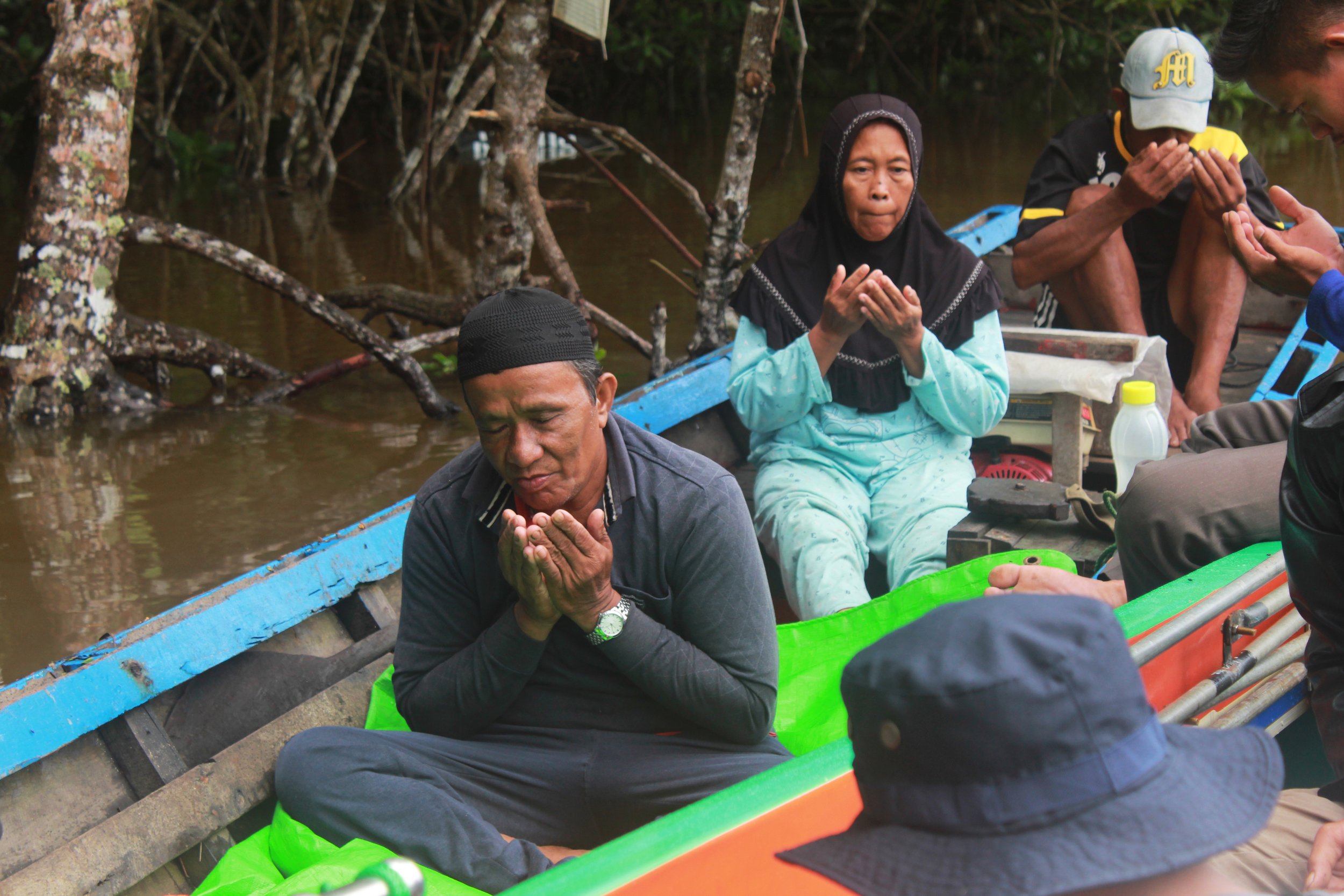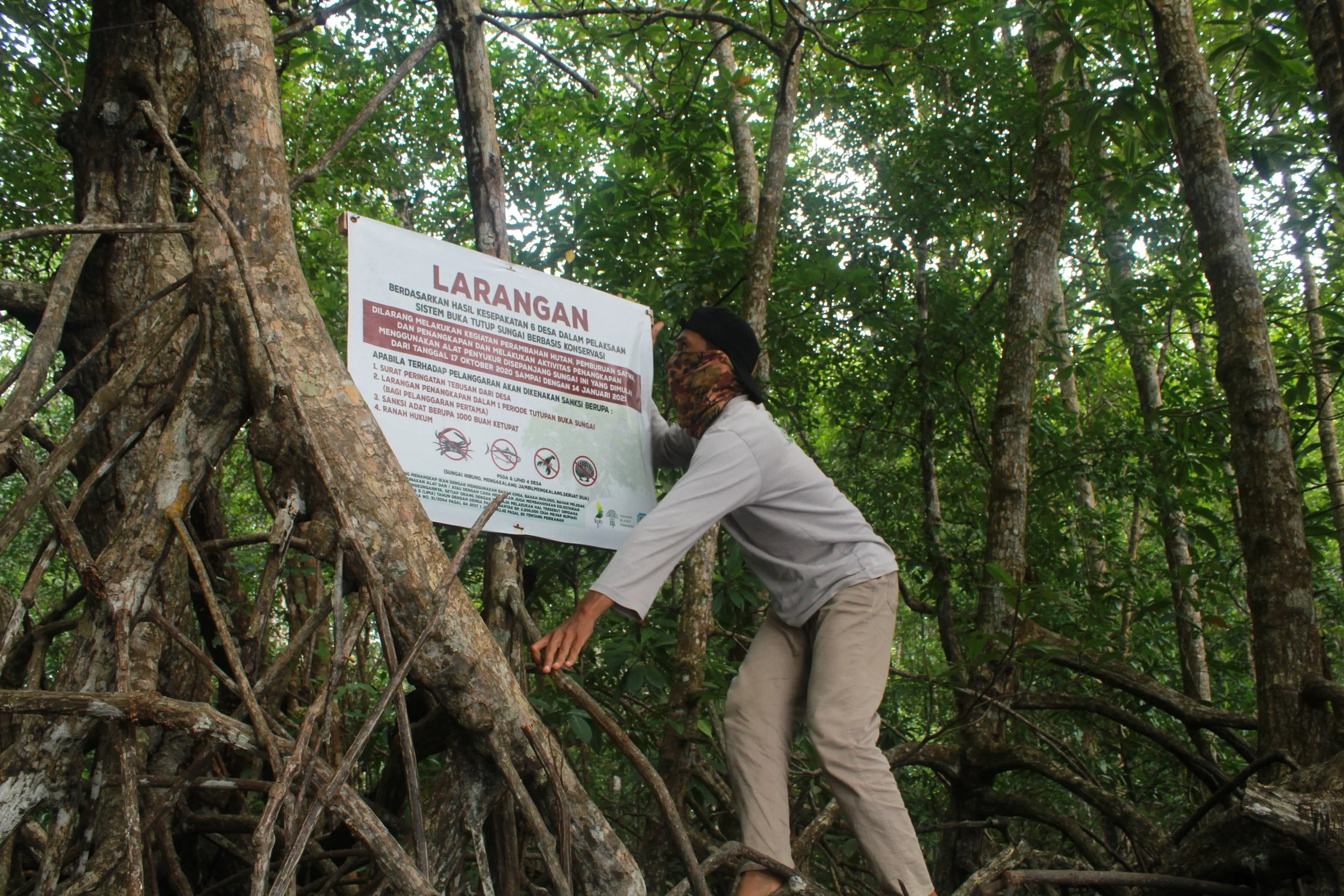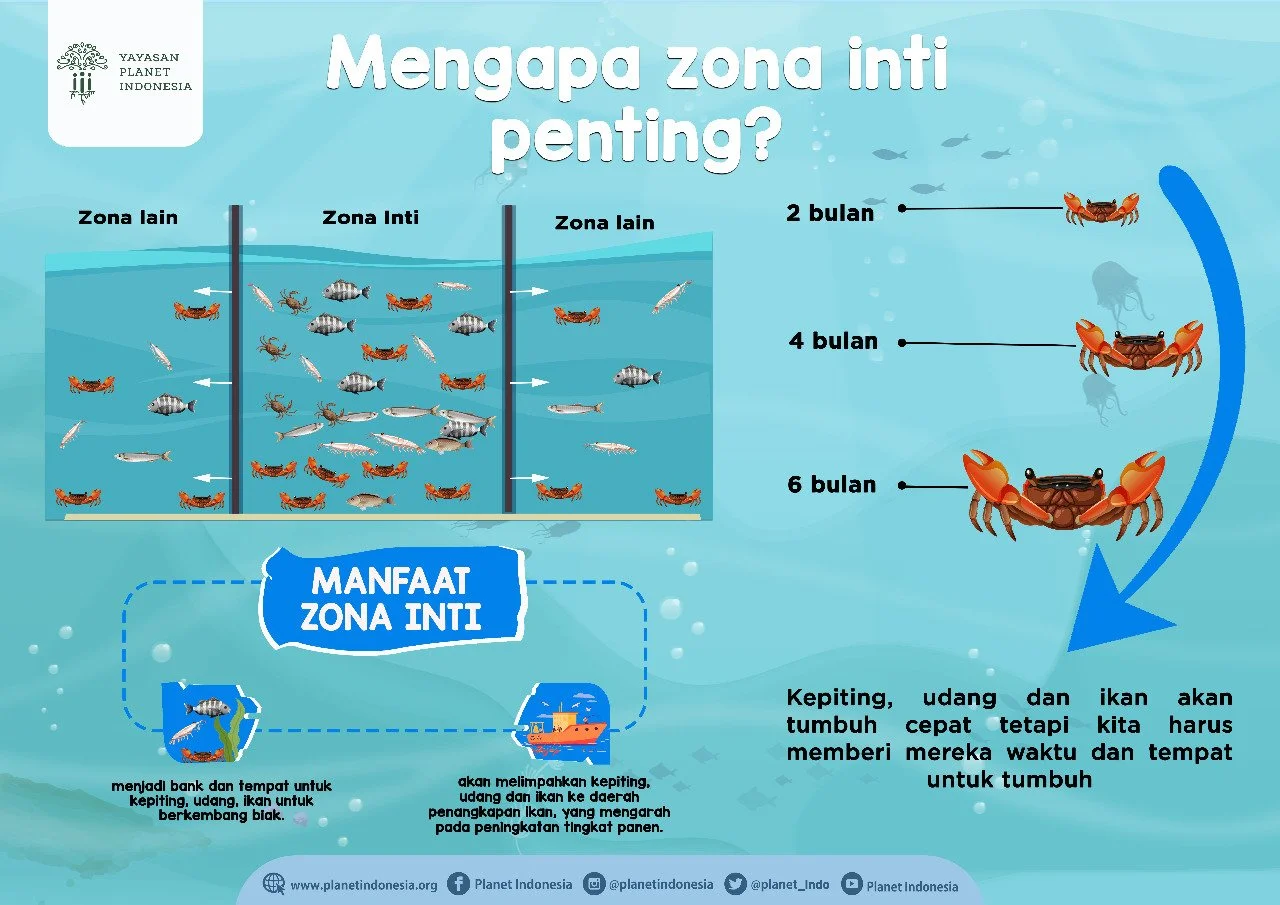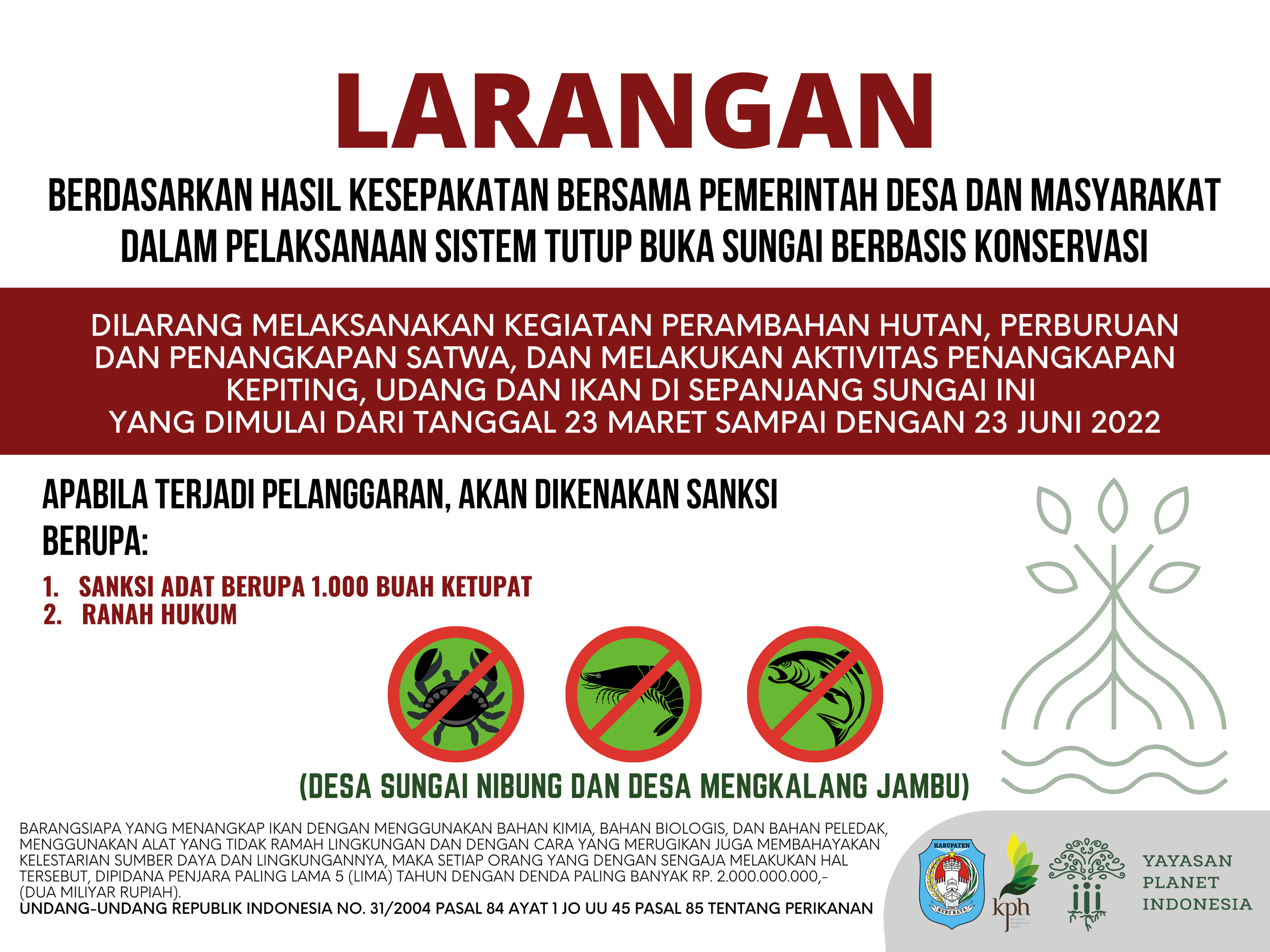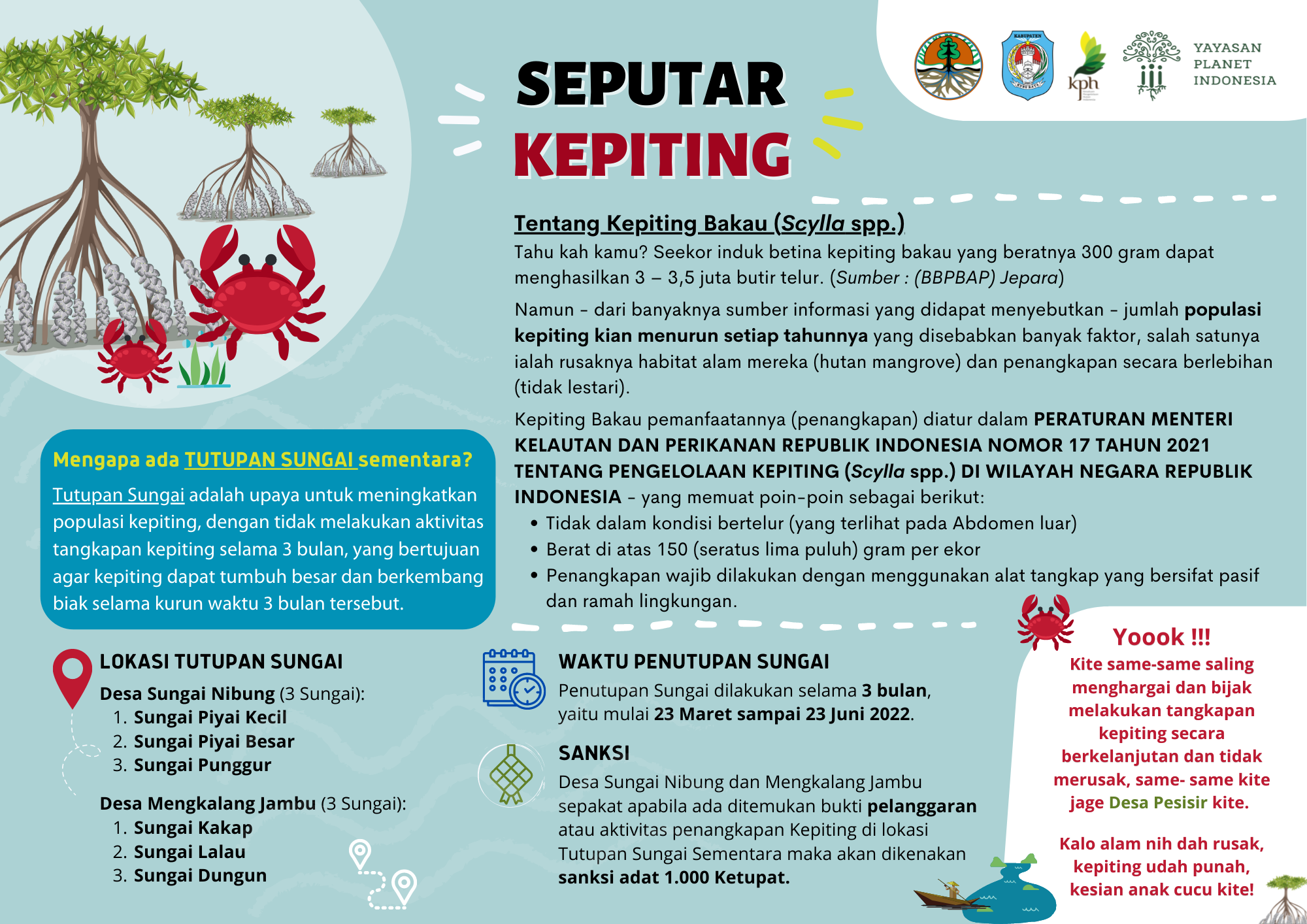Giving crabs a break: How the Coastal Community of Kubu Raya maintains Sustainable Mangrove Crab Fisheries
By Roni Bia Santo
To help sustain the economically-significant population of mangrove crabs among the dense coastal mangrove habitat of Kubu Raya, a group of communities has a simple method, give the crabs a break.
For six communities, this process begins with temporarily closing a total of six of their rivers to fishing. This protection method is an adopted village regulation that temporarily prohibits the taking of certain natural resources in specific coastal areas, like the mangrove crab, which serves as a significant source of income for families in Kubu Raya. Individual rivers are closed for a period of approximately three months with closures occurring twice a year. The purpose is to allow the targeted species to have enough time to grow larger, reproduce and replenish the population.
While these rivers are closed, communities will shift fishing intensity onto open rivers as well as participate in alternative livelihoods, supported through local Conservation Cooperatives, such as stingless beekeeping.
Read more: Community-led fisheries management: Reflecting on our recent temporary fishing reserve
Abdul Hadi, the chairman of the Village Forest Management Institution (LPHD) in Sungai Nibung Village, Kubu Raya, explained that the temporary fishing closures are a recurring activity in Sungai Nibung and have been successfully running since 2017.
"The closing and opening of river activities is carried out by means of joint deliberation and collaboration between crab fishermen, village heads, LPHD and traditional leaders, whose closure locations are jointly determined and the closing period is based on the crab breeding season" said Abdul Hadi.
He also added that, during the river closing ritual, the village head reads out announcements and customary rules to fishermen, with the intent that all fishers in attendance obey the rules and help disseminate them to other fishers operating in the area. Once the river closure activity is in progress and someone is found to have violated the community rules, they will be subject to customary sanctions. This includes a fine where the funds of which are reinvested into the community.
Coinciding with the river closure ceremony is the installation of signage at the mouths of select rivers to alert fishers of the temporary closure.
"The prohibition markers are installed to inform the entire community not to carry out crab, fish or shrimp fishing activities in river areas that are closed for a predetermined three-month period", Abdul Hadi explained.
After each three-month river closure period, the river is reopened with a short ceremonial event featuring special food, drinks, and prayer, in which the whole community gathers and helps remove the signs.
For the villages of Sungai Nibung and Mengkalang Jambu, the first river closure of 2022 began on March 23rd with the river remaining closed until just recently - June 23rd. The villages of Seruat Dua, Mengkalang, Dabong, and Kuala Karang have different times in which they manage their river closures which are informed by the data they collect on their specific fisheries.
Muhammad Ikhsan, Yayasan Planet Indonesia (YPI) social forestry staff, explains that YPI provides support to the community in order to bolster community efforts in sustainable fisheries management practices in many ways including, creating enabling conditions, assisting with data collection, and assisting coastal monitoring through marine-based SMART patrols.
The assistance provided by Yayasan Planet Indonesia is not only for the sake of preserving the mangrove forest ecosystem, but to promote the stability of crab fisheries so that it can support the economic resilience of the community in the long term, by maintaining the carrying capacity and quality of the mangrove ecosystem.
"There is some support provided by YPI in the closing and opening of the river fishing activities, including YPI facilitating deliberation meetings, allowing community members to agree on the time and place of implementation. YPI also assists in collecting data on crab catches every time there is a river closure and river opening in these areas”, said Ikhsan.
Data collectors study the size, weight, populations and trapping effort of mangrove crab to learn more about these closures and their impacts on natural resources. Trained community members are primarily responsible for collecting and reporting data on crab catch to help inform future community management efforts and the use of local marine areas.
To formulate comparisons, data collectors also conduct research independent of fishing on local populations to help determine the effectiveness of temporary river closures, Ikhsan explained.
The communities of Kubu Raya experience great success by their adaptive management of mangrove crab fisheries within their Locally Managed Marine Area and their work serves as a great example of why the best natural resource management is conducted by the communities that depend on those resources to build resilient livelihoods and maintain healthy ecosystems.
Read more: Locally Managed Marine Areas: an interview with Agustar
Thank you for reading, you can support our work here. If you have any questions please reach out via admin@planetindonesia.org.
Sign up for our monthly e-newsletter below and follow us on our social media pages: Facebook, Instagram, Linkedin, and Twitter to get timely updates on our activities, an insider’s look into the lives of front-line conservationists, and ongoing programs.




